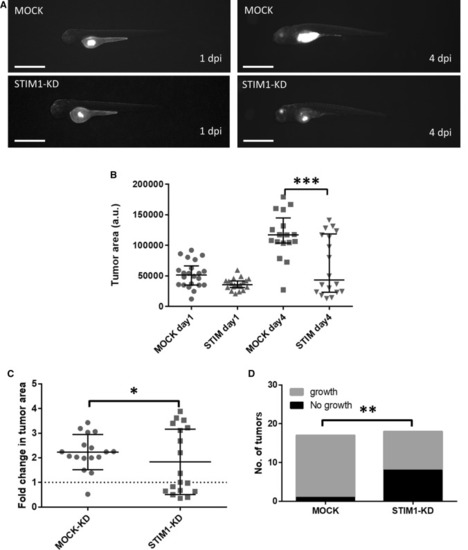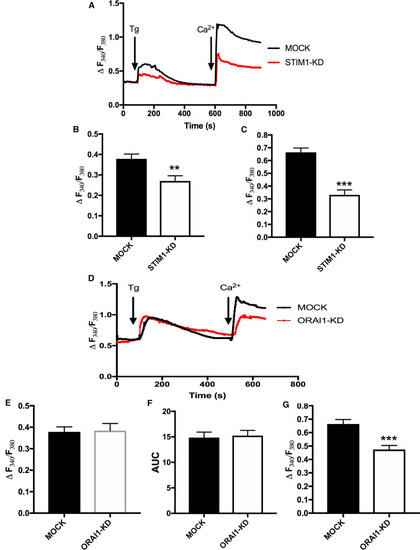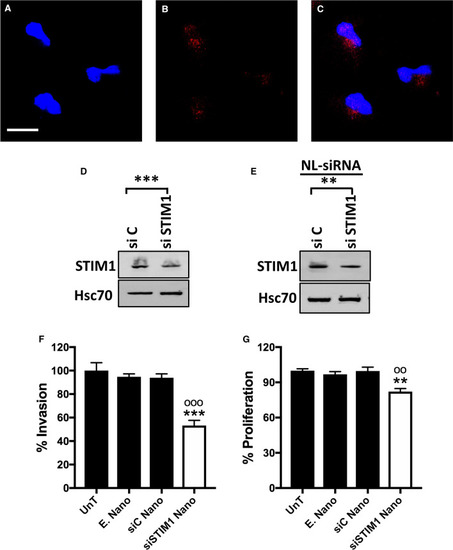- Title
-
Stromal interaction molecule 1 (STIM1) knock down attenuates invasion and proliferation and enhances the expression of thyroid-specific proteins in human follicular thyroid cancer cells
- Authors
- Asghar, M.Y., Lassila, T., Paatero, I., Nguyen, V.D., Kronqvist, P., Zhang, J., Slita, A., Löf, C., Zhou, Y., Rosenholm, J., Törnquist, K.
- Source
- Full text @ Cell. Mol. Life Sci.
|
Zebrafish xenograft experiments. |
|
Expression of STIM1 and ORAI1 proteins and generation of stable knock-down cells. |
|
|
|
STIM1 or ORAI1 knock-down attenuates invasion and receptor expression in thyroid cancer ML-1 cells. |
|
STIM1 and ORAI1 regulate proliferation of thyroid cancer ML-1 cells. |
|
STIM1 knock-down decreased the expression of HIF-1α, calpain activity and the activity of MMP2 and MMP9 and in ML-1 cells. |
|
Functional efficacy of MPDA-DMEA nanoparticles in ML-1 thyroid cancer cells. |
|
STIM1-protein expression in human normal and thyroid cancer tissues. |








